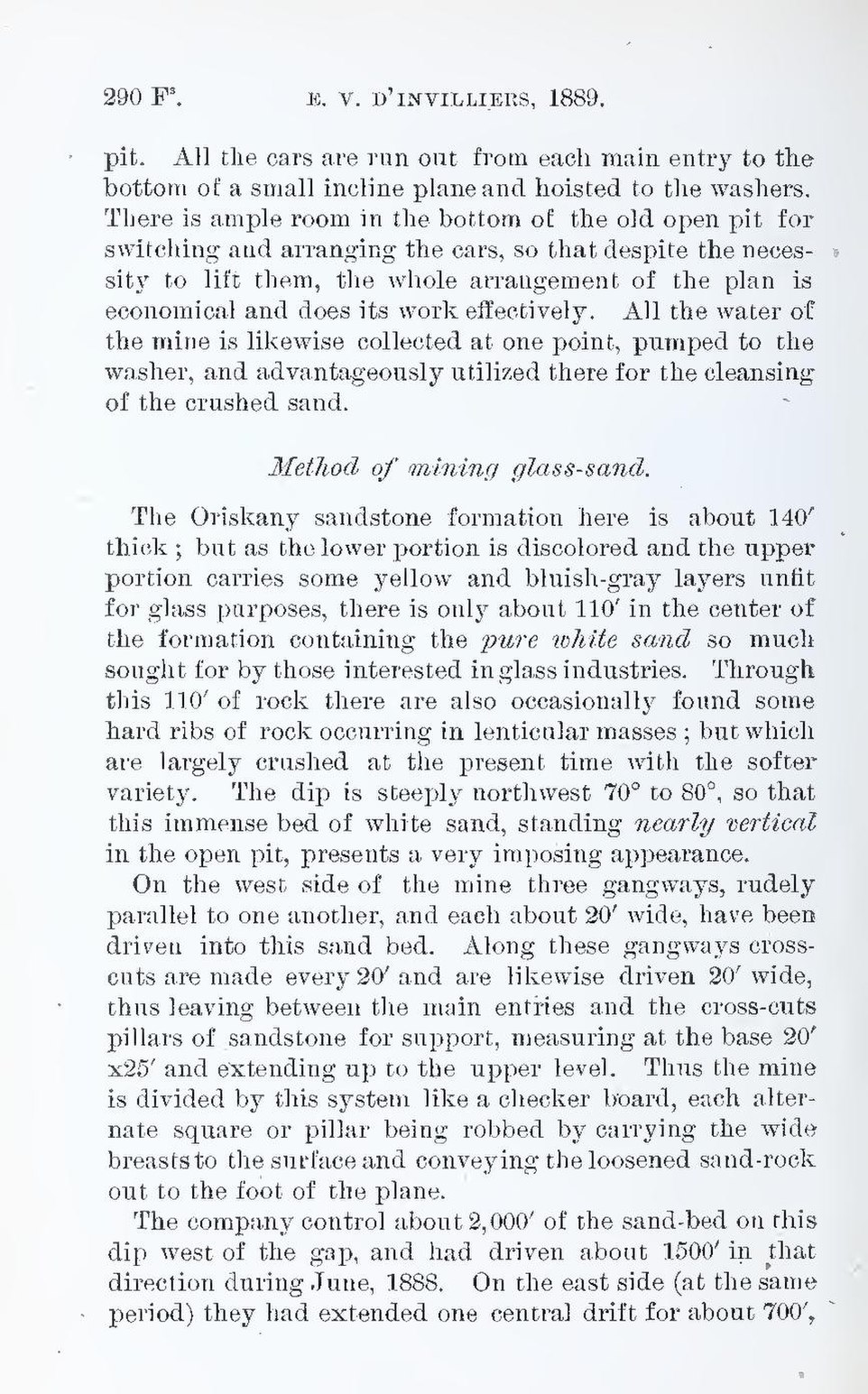pit. All the cars are run out from each main entry to the bottom of a small incline plane and hoisted to the washers. There is ample room in the bottom of the old open pit for switching and arranging the cars, so that despite the necessity to lift them, the whole arrangement of the plan is economical and does its work effectively. All the water of the mine is likewise collected at one point, pumped to the washer, and advantageously utilized there for the cleansing of the crushed sand.
Method of mining glass-sand.
The Oriskany sandstone formation here is about 140′ thick; but as the lower portion is discolored and the upper portion carries some yellow and bluish-gray layers unfit for glass purposes, there is only about 110′ in the center of the formation containing the pure white sand so much sought for by those interested in glass industries. Through this 110′ of rock there are also occasionally found some hard ribs of rock occurring in lenticular masses; but which are largely crushed at the present time with the softer variety. The dip is steeply northwest 70° to 80°, so that this immense bed of white sand, standing nearly vertical in the open pit, presents a very imposing appearance.
On the west side of the mine three gangways, rudely parallel to one another, and each about 20′ wide, have been driven into this sand bed. Along these gangways cross-cuts are made every 20′ and are likewise driven 20′ wide, thus leaving between the main entries and the cross-cuts pillars of sandstone for support, measuring at the base 20′×25′ and extending up to the upper level. Thus the mine is divided by this system like a checker board, each alternate square or pillar being robbed by carrying the wide breasts to the surface and conveying the loosened sand-rock out to the foot of the plane.
The company control about 2,000′ of the sand-bed on this dip west of the gap, and had driven about 1500′ in that direction during June, 1888. On the east side (at the same period) they had extended one central drift for about 700′,
